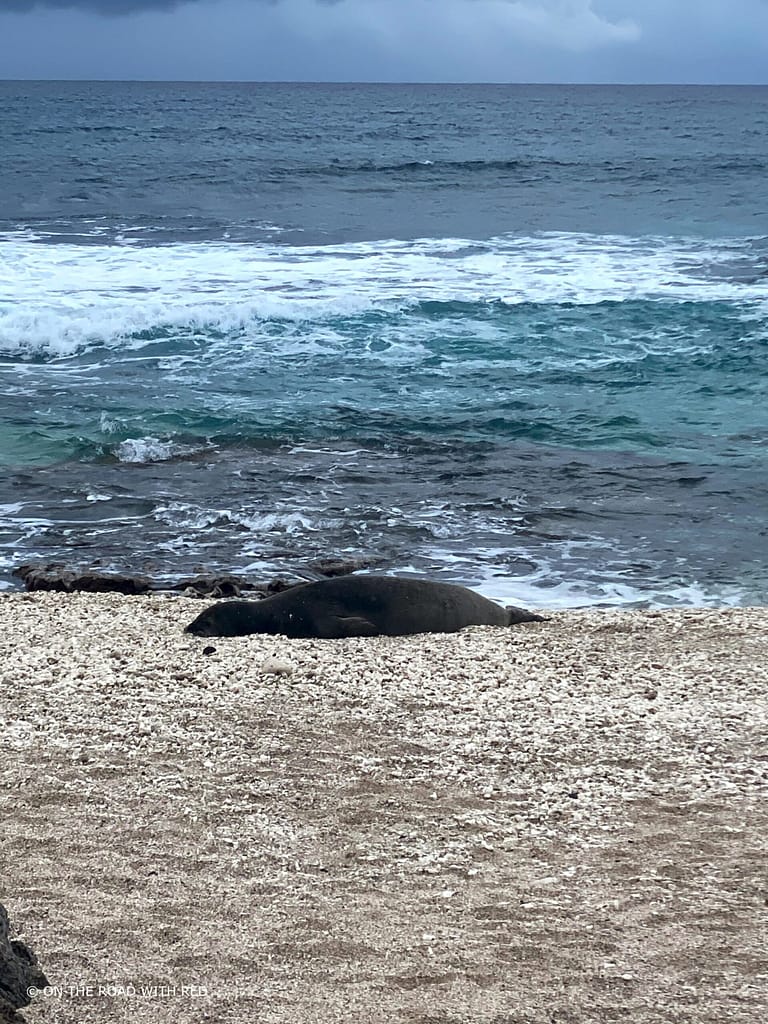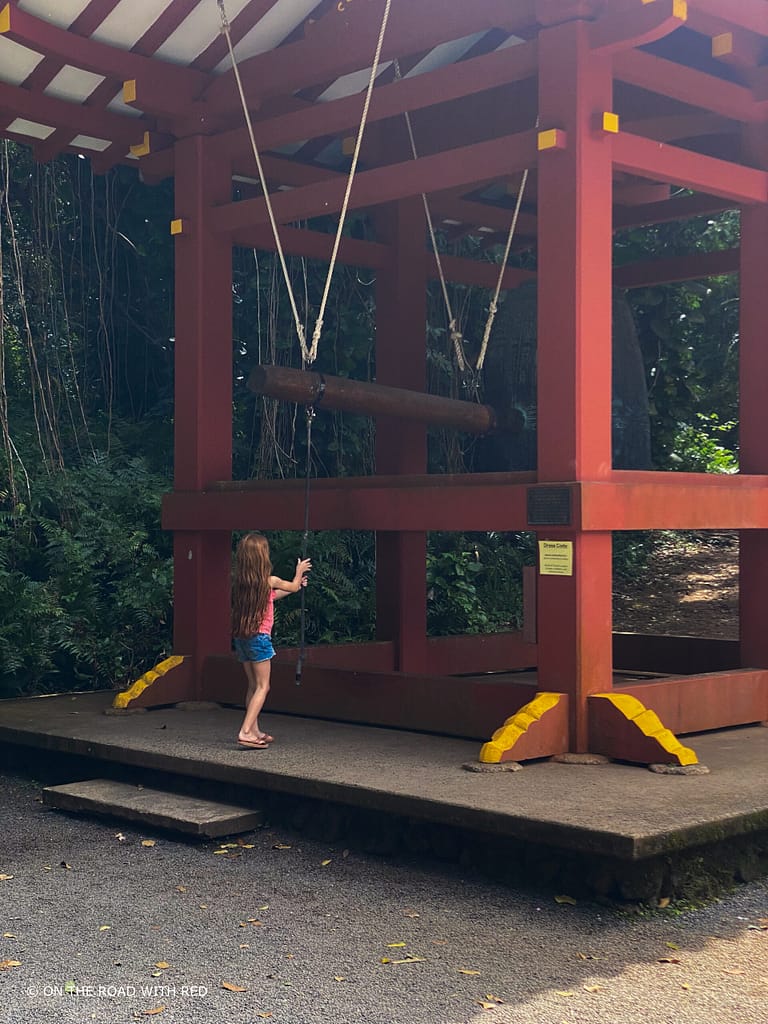
Conservation of the Hawaiian Sea Turtle
Conservation of the Hawaiian Sea Turtle
The Hawaiian sea turtle, or similarly the “honu” as it is known in the Hawaiian language, is not merely a marine creature; it embodies resilience and forms a part of Hawaii’s vibrant natural heritage. Roaming the Pacific Ocean for millions of years, these gentle giants now face various threats, one of which is the impact of tourism. In this exploration, we’ll delve into the significance of conserving the Hawaiian sea turtle, the repercussions of tourism on their populations, and how visitors can uphold conservation efforts, teaching the next generation to protect the marine ecosystem.
A Living Legacy
Honu are loved in Hawaiian culture, symbolizing longevity, peace, and good fortune. For instance, they are a vital component of Hawaii’s coastal ecosystem, eating algae and seagrasses, which in turn aids in preserving the health of coral reefs and seafloor habitats. Discover more about the cultural importance of honu through Hawaii’s official tourism site.
Impact of Tourism on Sea Turtles
Tourism is a significant contributor to Hawaii‘s economy, yet it can also inadvertently upset the marine environment’s delicate balance, especially concerning the honu. Here’s a breakdown of some of the challenges faced by the Hawaiian sea turtle due to tourism:
Beach Congestion
Beach congestion significantly impacts Hawaiian sea turtles, a species reliant on serene, undisturbed shores for their survival. These turtles require peaceful environments for crucial activities like nesting. However, crowded beaches can severely disrupt this process. When faced with throngs of people, turtles may become stressed and hesitant to approach the shore. This hesitation can lead to them not nesting at all, a scenario detrimental to their population growth.
Moreover, the presence of numerous beachgoers and their activities can lead to physical disturbances. The increased foot traffic compacts the sand, making it difficult for turtles to dig nests. Hatchlings, once emerged, find their journey to the sea more perilous due to the multitude of obstacles and disturbances. They need a clear path to navigate by moonlight to the ocean, but congestion can disorient and exhaust them, decreasing their chances of survival.
Additionally, beach congestion often results in habitat degradation. The constant movement of people and beach equipment can damage the coastal vegetation, which is essential for providing a natural, sheltered environment for turtles to lay their eggs. The degradation of these habitats can have long-term effects on the availability and quality of nesting sites.
Public education and regulated beach access during nesting and hatching seasons are vital measures for mitigating these impacts. By limiting human presence and activities on key nesting beaches, we can provide a safer environment for these turtles. Educating beachgoers about the importance of maintaining distance from nesting sites and the impact of their actions on turtle populations is also crucial. Through these efforts, we can contribute to the preservation of Hawaiian sea turtles, ensuring their continued presence in our oceans.
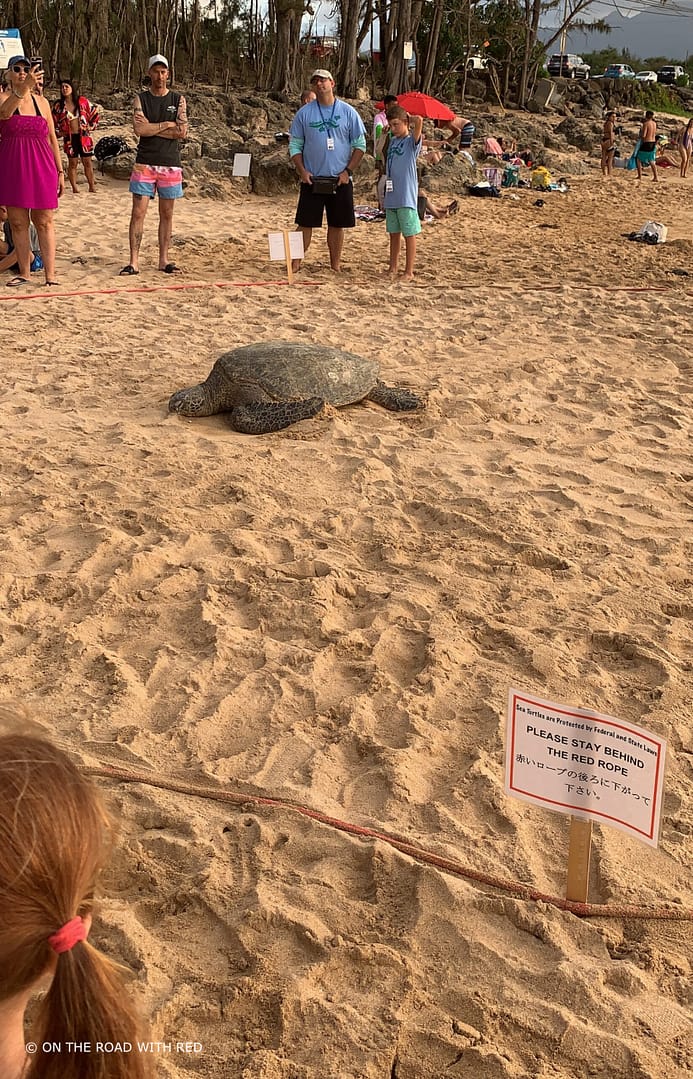
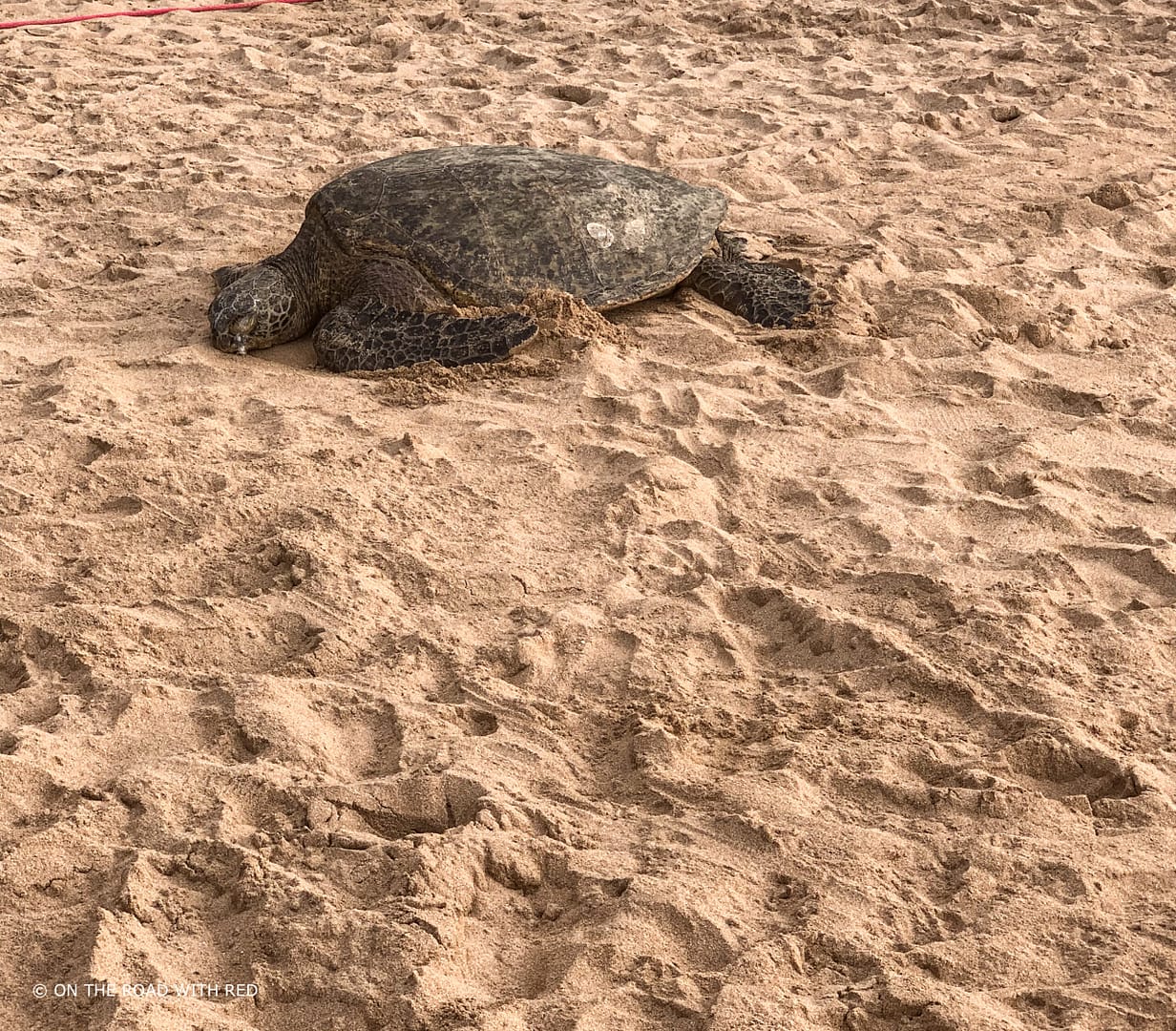
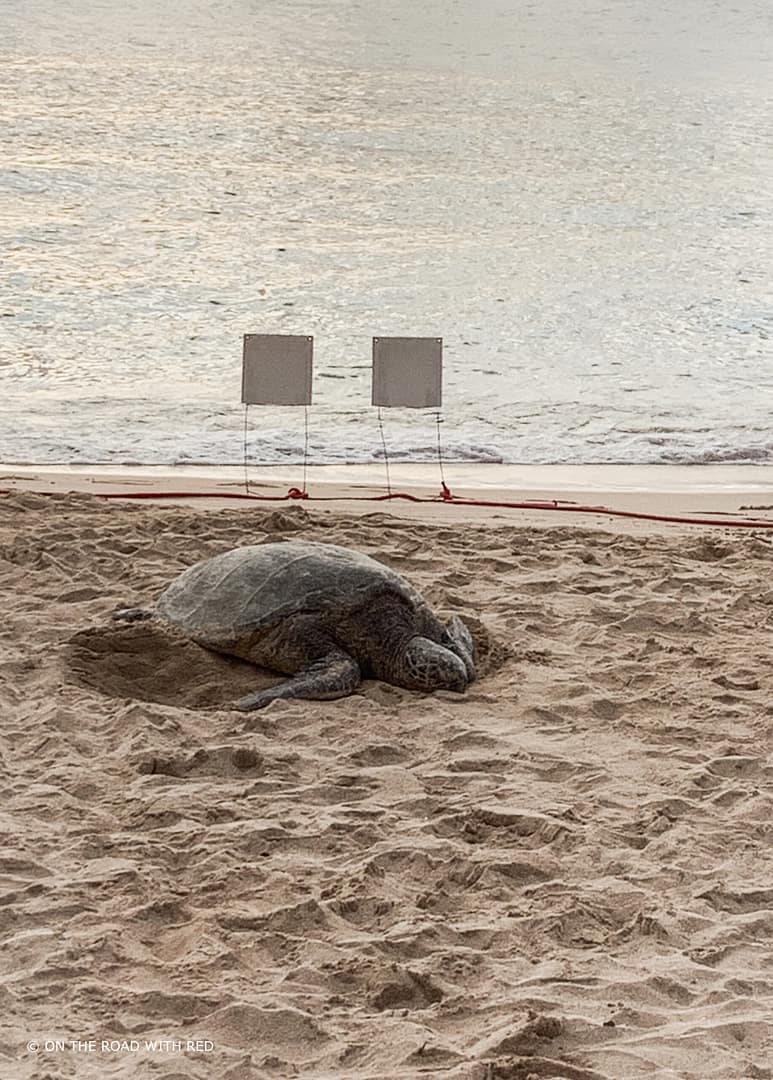
Artificial Lighting
Artificial lighting poses a significant challenge for Hawaiian sea turtles, affecting their natural life cycle in various detrimental ways. Sea turtles, particularly hatchlings, rely on natural light cues from the moon and stars to navigate toward the ocean after emerging from their nests. However, artificial lights from nearby buildings, streetlights, and other sources create confusion, leading hatchlings astray. This misdirection often results in them heading towards danger instead of the safety of the sea. The impact of this disorientation can be fatal, exposing the young turtles to predators, dehydration, and the risk of being run over on roads.
For adult turtles, especially gravid females ready to nest, bright lights can be a deterrent. They may avoid well-lit beaches, struggling to find suitable and safe places to lay their eggs. This challenge can lead to a decrease in successful nesting attempts, ultimately affecting the population size.
The long-term consequences of light pollution on Hawaiian sea turtles are concerning. It disrupts the reproductive success and survival rates of hatchlings. To mitigate these effects, initiatives such as installing turtle-friendly lighting, implementing light ordinances, and educating the public about the importance of minimizing light pollution near nesting beaches are crucial. By addressing the issue of artificial lighting, we can help ensure safer environments for these turtles, supporting their conservation and the health of marine ecosystems.
Marine Debris
Marine debris is a growing threat to Hawaiian sea turtles, with far-reaching and often devastating consequences. These turtles, curious by nature, frequently mistake floating debris like plastic bags and fragments for food. Ingesting this debris can lead to serious health problems, including intestinal blockages and malnutrition. It can be fatal. Additionally, sea turtles can become entangled in discarded fishing gear, such as nets and lines. This entanglement restricts their movement, making it difficult for them to swim, surface for air, or escape predators. For hatchlings, the journey to the sea is fraught with risks from debris. They must navigate a gauntlet of obstacles that can hinder their progress to the ocean.
The presence of marine debris also affects the quality of the turtles’ habitat. Pristine beaches are essential for nesting, but debris accumulation can make these areas less suitable. This pollution not only disrupts the nesting process but can also harm the incubating eggs.
Addressing the issue of marine debris requires a concerted effort. It involves beach cleanups, responsible waste management, and reducing plastic use. Public education is also key. People must understand the impact of their actions on marine life. By tackling marine debris, we can help protect Hawaiian sea turtles and ensure the health of our oceans.
Learn more about marine debris from NOAA.
Boat Traffic
Boat traffic presents a significant hazard to Hawaiian sea turtles, with impacts ranging from direct physical harm to broader ecosystem disruptions. These turtles often surface for air or bask near the water’s surface, making them vulnerable to collisions with boats. Such encounters can result in serious injuries or even be fatal. The propellers and hulls of boats pose the greatest risk, capable of inflicting severe wounds. Beyond physical injuries, boat traffic can also lead to behavioral changes in sea turtles. The noise and presence of boats can disrupt their natural feeding and mating behaviors, causing stress and disorientation.
The increased boat traffic in popular Hawaiian waters also contributes to the degradation of sea turtle habitats. The churn of boat engines can damage delicate seagrass beds and coral reefs, which are crucial feeding grounds for sea turtles. Furthermore, the fuel and oil spills associated with boats lead to water pollution, adversely affecting the health of the marine environment.
Mitigating the impact of boat traffic on sea turtles involves implementing and enforcing speed limits in areas frequented by these animals. Raising awareness among boaters about the presence of sea turtles and the importance of vigilance while navigating these waters is also essential. By adopting responsible boating practices and supporting conservation measures, we can significantly reduce the risks to Hawaiian sea turtles and help preserve their populations.
Embracing the Role of Conservation Stewards
Visitors to Hawaii can significantly contribute to preserving the islands’ natural allure and safeguarding its wildlife, including the honu. Here’s how you can make a difference:
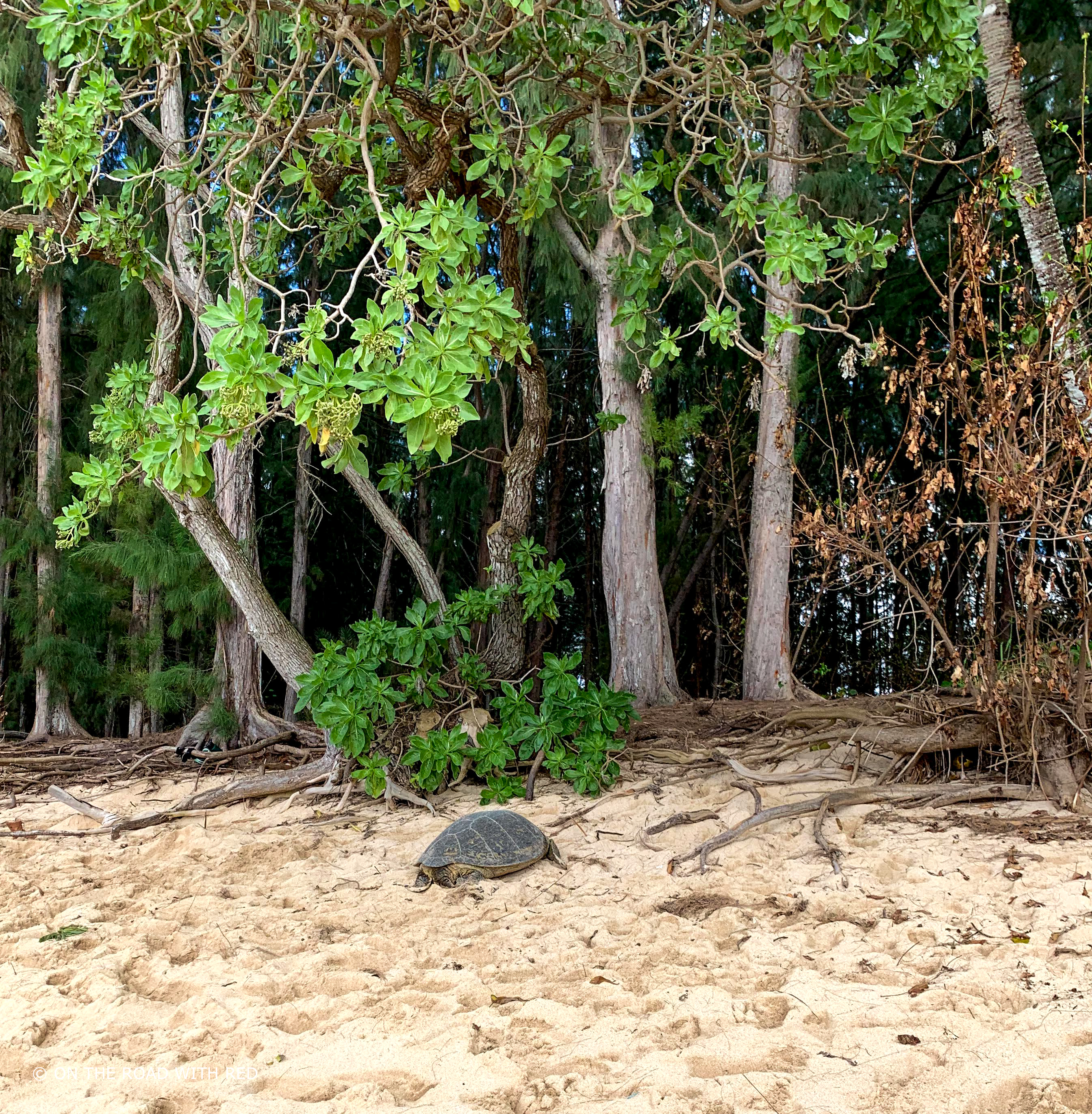
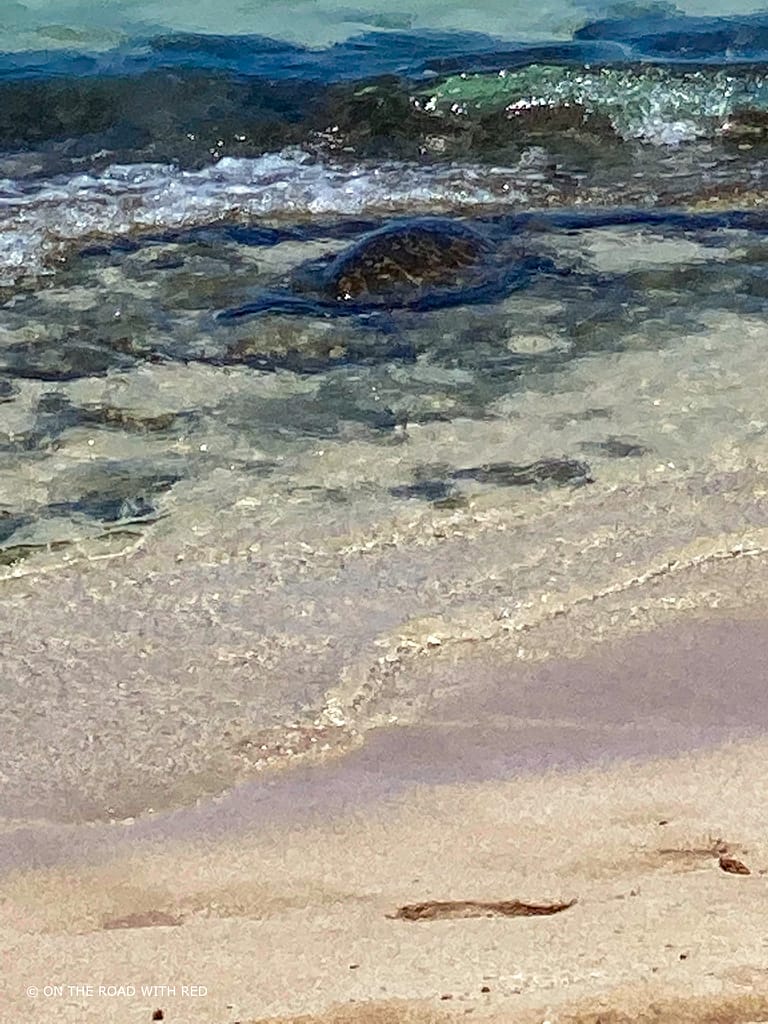
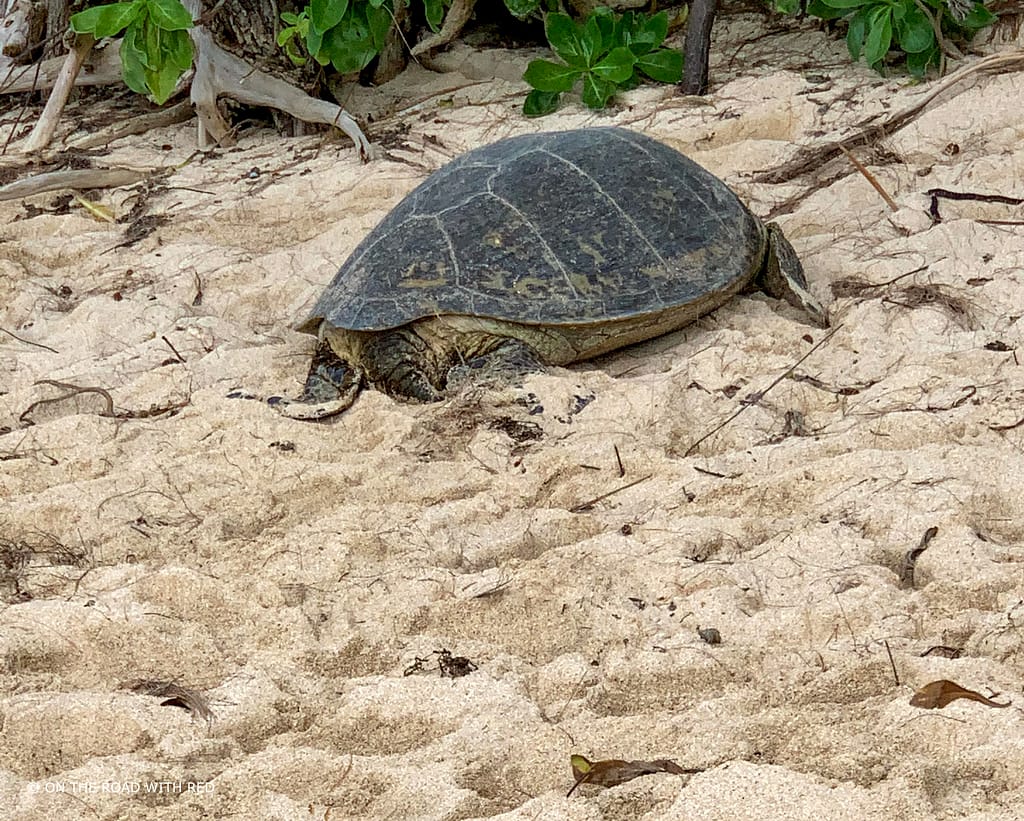
Educate Yourself
As individuals, we have a responsibility to educate ourselves about the conservation of the Hawaiian sea turtle. This knowledge is crucial for their survival. Understanding the threats these turtles face is the first step. These threats include habitat destruction, marine debris, and the impacts of climate change. Being informed helps us make better choices. For instance, reducing plastic use and supporting beach cleanups can lessen marine debris.
When visiting beaches, knowing how to behave around nesting sites is important. It protects turtles and their eggs. We should also learn about responsible boating practices to avoid harmful encounters with sea turtles. Sharing this knowledge with others amplifies its impact. It leads to a more informed and responsible society.
In essence, our awareness and actions can contribute significantly to the conservation of Hawaiian sea turtles. By educating ourselves, we play an active role in preserving these magnificent creatures for future generations. We should never let ignorance be an excuse when visiting new areas.
Respect Wildlife
Respecting wildlife, particularly the Hawaiian sea turtle, is an essential aspect of conservation and ethical interaction with nature. These majestic creatures, revered in many cultures, deserve our utmost respect and consideration in their natural habitats.
When encountering sea turtles, whether while swimming, boating, or observing them on the beach, it’s crucial to maintain a safe and respectful distance. This ensures that the turtles are not stressed or disturbed, especially during critical activities like nesting or basking. Touching or feeding sea turtles disrupts their natural behavior and can have negative health implications.
I will add that from personal experience, Honu can be quite curious. During the pandemic, we went for a swim in a cove by our house. This area was in a resort and typically filled with people. There were many turtles in the area. Three in particular were young juveniles who lived in the cove. One had a flipper missing. They were identifiable as “locals”. One in particular literally chased us around the cove. Typically when I have snorkeled in open water they just swim by unbothered. I truly believe this one was lonely. That said we grabbed some amazing pictures on zoom and then sat on the beach for a bit. It was a magical and unusual experience. That said, you should never pursue or harass any wildlife.



Additionally, respecting wildlife also means protecting their habitats. Keeping beaches clean, reducing pollution, and being mindful of our activities in and around the ocean contribute to a safer environment for sea turtles. Educating others about the importance of wildlife respect furthers the cause of conservation. By practicing and promoting respectful behavior, we help ensure that Hawaiian sea turtles continue to thrive in their natural environment, preserving the delicate balance of our marine ecosystems.
Reduce Your Environmental Impact
Reducing our environmental impact is crucial for the protection and conservation of the Hawaiian sea turtle. Every action we take, big or small, can have a ripple effect on their habitat and survival. Simple steps like reducing plastic use can significantly lower the amount of marine debris, a major threat to sea turtles who often mistake plastic for food.
Opting for reusable items, participating in beach cleanups, and proper waste disposal are effective ways to combat this issue. When visiting beaches, it’s important to leave no trace – this means taking all your belongings and trash with you. Responsible boating practices, such as adhering to speed limits in areas known for sea turtle activity, can prevent harmful collisions. Lowering our carbon footprint also plays a role; climate change affects sea level and beach erosion, impacting turtle nesting sites.
We can contribute to mitigating these effects by adopting more sustainable lifestyle choices like using public transport, conserving energy, and supporting renewable energy sources. In essence, every effort to reduce our environmental impact not only benefits the Hawaiian sea turtle but also contributes to the health of our planet’s ecosystems.
Observe Wildlife Regulations
Observing wildlife regulations is crucial in the conservation efforts for the Hawaiian sea turtle. These regulations are in place to protect these endangered animals and their habitats. Key rules include maintaining a safe distance from turtles. This includes both on land and in water, to avoid causing them stress or disrupting their natural behavior.
It’s illegal to touch, harass, or feed sea turtles, as these actions can have detrimental effects on their health and well-being. On many beaches, specific guidelines and barriers are set up around nesting sites to protect turtles and their eggs. It’s important to respect these boundaries and not interfere with nesting activities.
Boaters are also required to follow regulations aimed at preventing collisions with sea turtles, such as adhering to speed limits in areas frequented by these animals. Violation of these regulations can lead to penalties. They are enforced to ensure the survival and recovery of the species.
Educating oneself about local wildlife regulations is a responsibility for anyone visiting or living in areas inhabited by sea turtles. For more information on specific regulations and guidelines, visitors can refer to resources provided by local wildlife authorities or conservation organizations. These resources offer valuable insights into how we can coexist with and protect Hawaiian sea turtles.
Support Conservation Efforts
Supporting the conservation efforts of the Hawaiian sea turtle is a vital action that can be undertaken by individuals to contribute to the survival and well-being of this endangered species. One effective way to support these efforts is through donations or volunteering with organizations dedicated to sea turtle conservation. These organizations work on various fronts, including habitat protection, research, public education, and advocacy for stronger environmental policies.
Adopting eco-friendly habits, such as reducing plastic use, participating in beach cleanups, and promoting sustainable fishing practices, also aids in creating a healthier marine environment for sea turtles. Additionally, educating oneself and others about the challenges faced by sea turtles and the ways to mitigate them is key. This broadens the impact of conservation initiatives. When visiting the habitats of sea turtles, it’s important to choose eco-friendly tour operators and respect all wildlife guidelines.
For more information on how to get involved or to learn more about sea turtle conservation, you can visit the websites of notable organizations like the Sea Turtle Conservancy or the World Wildlife Fund, which offer resources and opportunities for engagement. Through collective and individual actions, we can make a significant difference in the efforts to conserve the Hawaiian sea turtle and ensure their continued presence in our oceans.
Imparting Conservation Values to the Next Generation
Children are the earth’s future guardians. Consequently, educating them on the significance of protecting sea turtles and other marine life is paramount for a sustainable future. Here’s how to instill these crucial values:
Hands-On Learning
Hands-on learning is a powerful tool for teaching children about the conservation efforts of the Hawaiian sea turtle. Engaging in interactive and practical activities helps to instill a sense of responsibility and connection to the environment from a young age.
One effective approach is participating in guided educational tours that focus on sea turtle habitats and conservation. These tours often include activities like beach cleanups, where children can learn about the impact of marine debris on sea turtles. Visiting aquariums or marine centers that have sea turtle rescue and rehabilitation programs offers an up-close look at the efforts taken to protect these creatures.
Many conservation organizations offer workshops and educational programs specifically designed for children. These programs often include interactive sessions on sea turtle biology, the threats they face, and what children can do to help. Art projects, story-telling sessions, and role-playing games centered around sea turtle conservation can also be both fun and educational.
For more information on hands-on learning opportunities and resources, parents and educators can visit websites of organizations dedicated to marine conservation, like the Sea Turtle Conservancy or Oceana, which offer a range of educational materials and activities. By engaging in these hands-on learning experiences, children can develop a deeper understanding and appreciation of the importance of conserving the Hawaiian sea turtle and the broader marine environment.
Lead by Example
Leading by example is an impactful way to teach children about the conservation of the Hawaiian sea turtle. When children see adults actively involved in environmental protection, they are more likely to adopt these behaviors themselves. Simple actions like reducing plastic use, participating in beach cleanups, and respecting wildlife regulations during beach visits demonstrate a commitment to conservation.
Parents and educators can organize or participate in local environmental events, showing children the importance of community involvement in conservation efforts. Sharing information about the Hawaiian sea turtle, perhaps through documentaries or educational websites, can also spark interest and understanding in young minds.
Additionally, supporting organizations dedicated to marine conservation through donations or volunteer work can further emphasize the importance of these efforts. By setting a positive example in everyday actions and decisions, adults can inspire the next generation to be conscientious and proactive in preserving the natural world, starting with the precious Hawaiian sea turtle.
Storytelling
Storytelling is a captivating and educational method to engage children in the conservation efforts of the Hawaiian sea turtle. Through stories, the challenges and beauty of these majestic creatures come to life, fostering empathy and understanding in young listeners.
Parents and educators can use storybooks specifically focused on sea turtles and their environment to illustrate the importance of conservation. These stories often include themes such as the impact of pollution, the significance of clean beaches, and the dangers of human interference, all tailored to be age-appropriate and impactful.
In addition to books, online resources, and animated videos can be powerful tools for storytelling. Libraries and local conservation organizations may also host storytelling sessions and workshops, combining the art of storytelling with hands-on learning activities. By immersing children in the narrative of the Hawaiian sea turtle, storytelling not only educates but also inspires a younger generation to be active participants in conservation efforts, understanding the vital role they play in protecting our planet’s biodiversity.
The Hawaiian sea turtle is a cherished emblem of Hawaii’s natural splendor and cultural heritage. By being responsible and informed visitors, we can help ensure these ancient mariners continue to flourish in their island paradise. Instilling conservation values in our children is a legacy not only for the honu but for all marine life and the future of our planet’s oceans. Collectively, we can act as the guardians of the waves, protecting the treasured marine life that calls Hawaii home.
Last Updated on December 8, 2023 by On the Road with Red



